Last-Minute NYC Holiday Gift Guide 🎁
We’ve created a holiday gift guide with presents for the intrepid New Yorker that should arrive just in time—


Originally founded as a Dutch village in the 17th century, Harlem is now one of New York City’s most prominent neighborhoods, sitting at the northern end of Manhattan. Since the 1920s, it has served as a major residential and cultural center for African Americans who moved to cities in the North, Midwest, and West during The Great Migration. Today, cultural revolutions and economic booms have transformed this former agricultural town into a rapidly growing city destination.
From major periods like the Harlem Renaissance to the neighborhood’s significance during the Civil Rights Movement, Harlem offers years of rich history and plenty of interesting sites to visit. Today, as the neighborhood’s economic growth persists, commercial businesses continue to move in and thrive.
Here are 25 must-visit spots you can find in Harlem:
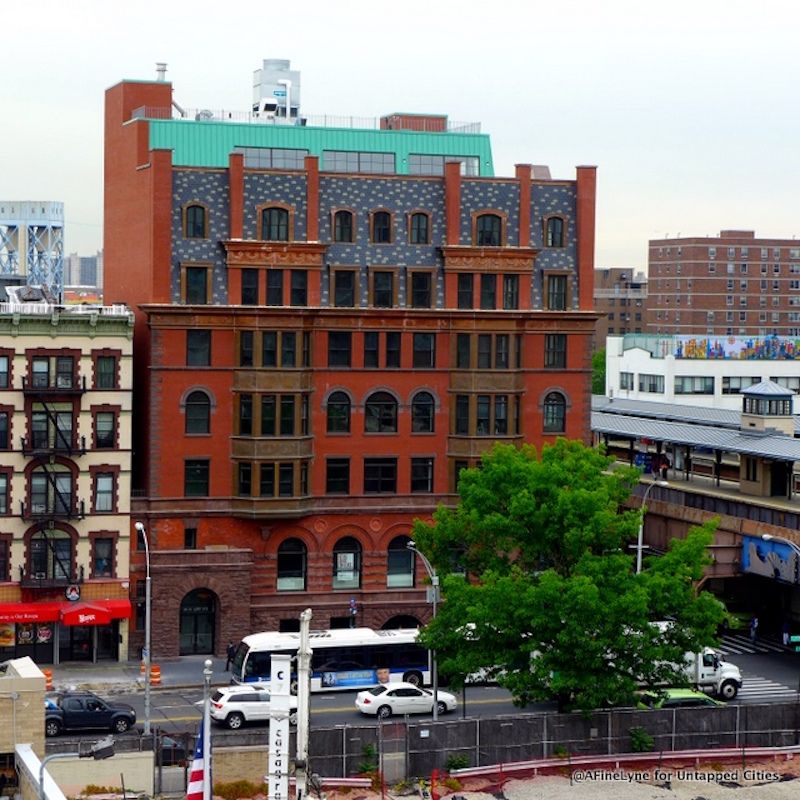
Designed by the architectural firm, Lamb & Rich, the Corn Exchange Building was built in 1883-1884, when Harlem was still only a suburb. The Mount Morris Bank and Safe Deposit Company were the occupants of the main floors, while the upper floors were made up of luxury apartments. The Mount Morris Bank soon became a branch of the Corn Exchange Bank, giving the building its name.
By 1972, the building was vacated to the city, and was eventually deemed a New York City landmark in 1993. A 2009 fire, which forced the top four floors to be demolished, was a main factor in the decision to renovate the building. Today, it’s still a site to behold in Harlem.
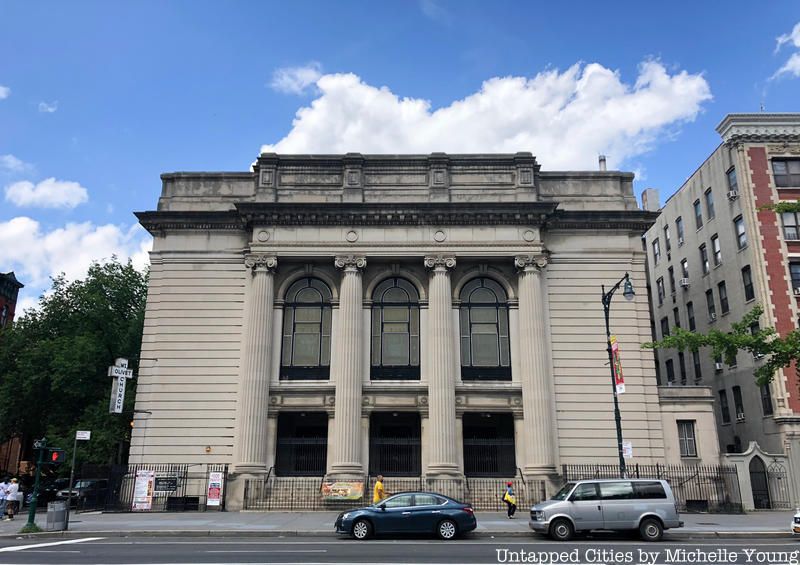
It is a little known fact that Harlem was once a huge Jewish settlement — at one time, being the third largest behind the Lower East Side and Warsaw.
The Mount Olivet Baptist Church is just one of the historical sites where Harlem’s heavily Jewish background is visible. The Old Testament verse: “Jehovah is in his holy temple; be silent, before him, before all the earth,” is inscribed on the marble pediment leading to the baptismal pool.
The church was initially built as a synagogue and was eventually an important stop in the Civil Rights Movement.
Many prominent figures have been chosen to speak at the church, including Venezuelan President Hugo Chavez and Zimbabwe President Robert Mugabe.
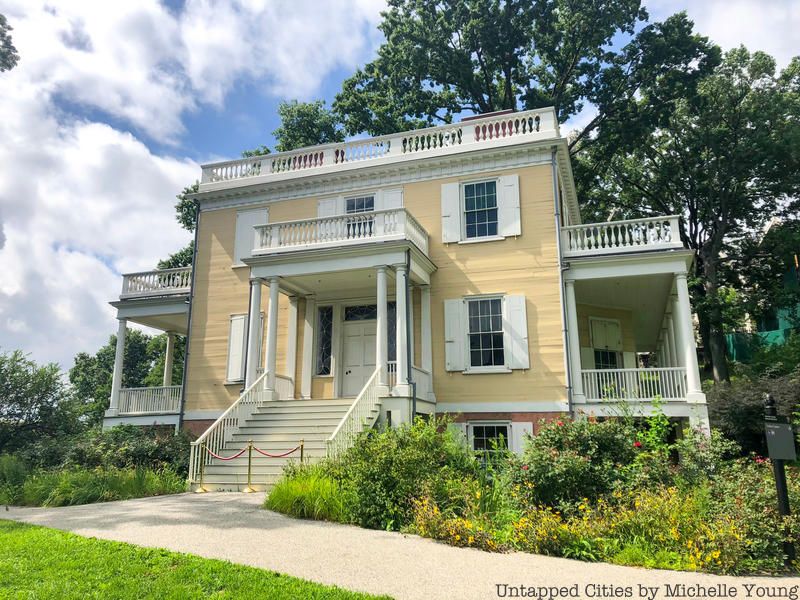
Alexander Hamilton was one of the country’s most influential founding fathers and he spent a significant amount of time in New York City. As such, he commissioned architect John McComb Jr. to design a him a country home on 32-acres of land in Harlem. The building was completed only two years before his death in 1804.
The Grange has since been relocated multiple times and is currently open to the public at its current location on 409 W 141st Street in St. Nicholas Park.
The home is listed as a U.S. National Memorial, a U.S. National Historic Landmark, and is on the U.S. National Register of Historic Places.
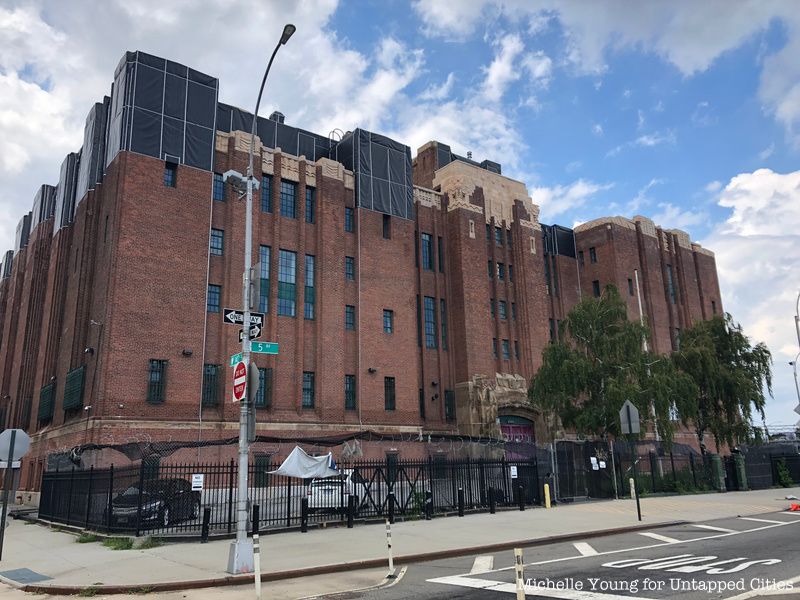
The 369th Regiment Armory was built in 1933 for the regiment’s outstanding war valor. The unit is popularly known as the “Harlem Hell Fighters,” and was the country’s first African-American regiment to fight in World War I, albeit under French command due to America’s segregation policies.
The armory, designed by Tachau & Vought, sits at 142nd Street and Fifth Avenue. It consists of two buildings: an Art Deco style administration building and a medieval-inspired drill shed that were both constructed with brick.
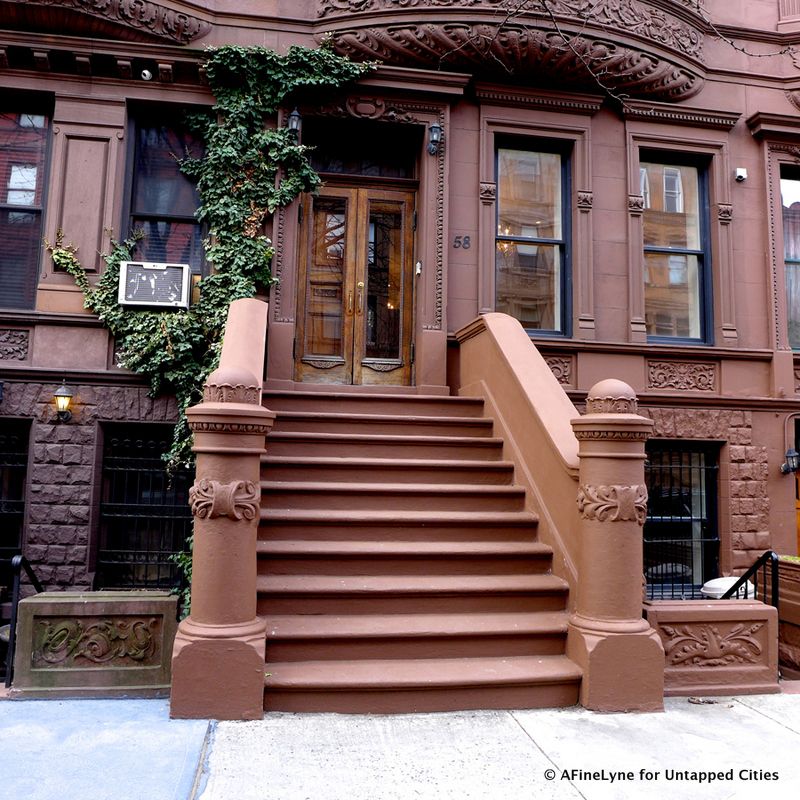
Maya Angelou is perhaps one of America’s most renowned figures of recent times. The civil rights activist and author primarily lived in Salem, North Carolina but also owned a town house in Harlem that she could call home.
When Angelou passed away in May 2014, her home in the Mount Morris Park was eventually sold for $4.08 million in 2016. Angelou herself had bought the place in 2002 for only $435,000 and she began renovating it with the help of architect Marc Anderson. The renovation, completed in 2004, kept parts of the original state of the building in order to keep its nostalgic integrity.
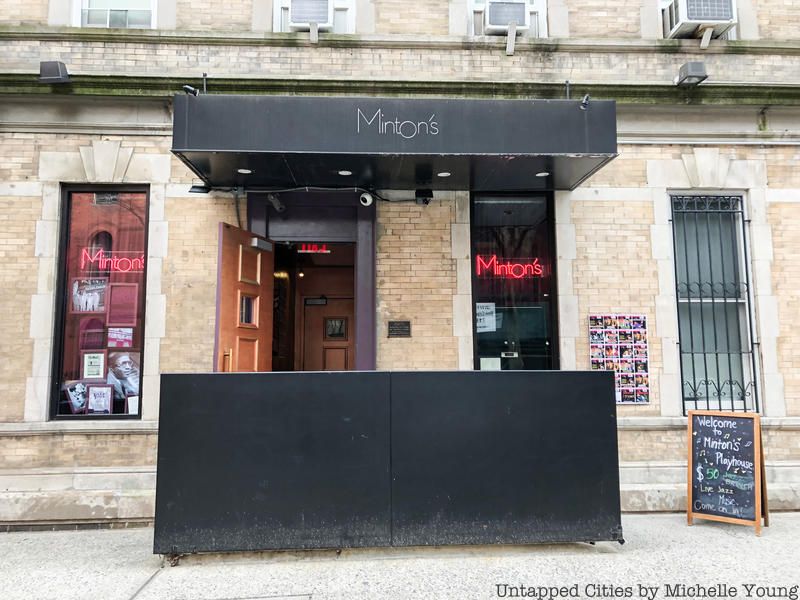
Minton’s Playhouse is world famous jazz bar that sits on the first floor of the Cecil Hotel at 210 West 118th Street. The bar was opened in 1938 by musician Henry Minton. Minton is famous for having a huge role in the development of modern jazz.
The jazz bar has featured some of the genre’s greatest talents, including Dizzy Gillespie, Thelonious Monk, and Count Bassie.
The venue was initially closed in 1974, but was renovated and reopened in 2006, before shuttering again for more renovations beginning in 2013. Minton’s Playhouse is now a part of the U.S. National Register of Historic Places and has officially reopened once again.

The Apollo Theater at 253 West 125th Street between Adam Clayton Powell, Jr. Boulevard and Frederick Douglass Boulevard is one of the most famous music venues in the world. Stars like Marvin Gaye, The Jackson 5, Billie Holiday, and many more have performed on the historic stage. The theater was so universally acclaimed that it was the first place The Beatles wanted to see when they arrived in America in 1964.
Like most of Harlem, the Apollo Theater was a significant site during the Civil Rights Movement, becoming the first theater to allow mixed-race audiences after its re-opening (and following its stint as a burlesque theater).
The theater is acknowledged as a New York City Landmark and listed on the U.S. National Register of Historic Places, and was considered so influential in James Brown’s life and work that his body was brought back to the Apollo before his funeral.
In 1979, Harlem Stage opened its doors at 150 Convent Avenue and quickly became one of the neighborhood’s premiere performing arts centers. The theater is a small, intimate venue that was built to celebrate the diverse and unique artistry that has developed in the neighborhood.
The music, dance, and theater is put on by artists of color and is designed to showcase Harlem’s artistic voice and the influence it has/had on the city and American culture.
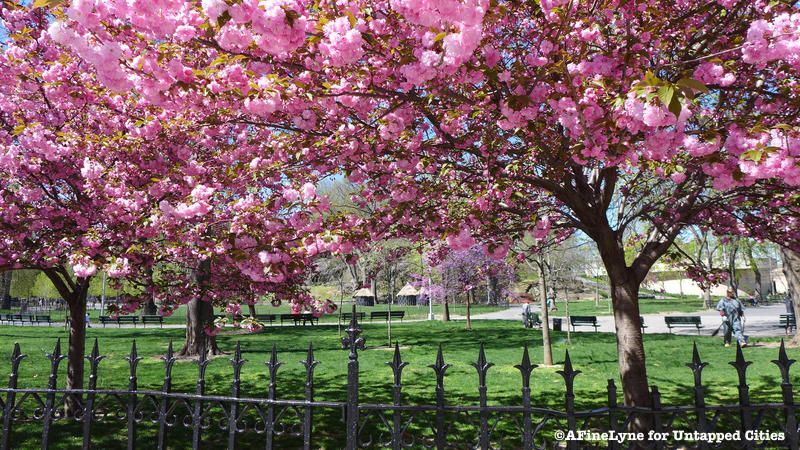
Marcus Garvey Park sits on Madison Avenue between E 120th Street and E 124th Street in Harlem.
The historic park is suitable for entire families and provides enough entertainment for everyone to enjoy their time. The park is made up of basketball courts, an outdoor pool, and a recreation center.
On summer nights, many gather in Marcus Garvey Park’s amphitheater to enjoy concerts, plays and performances, including Drummer’s circles to African and Caribbean music, which are a popular sight to come across. Also located within the park is the Harlem Fire Watchtower, the only remaining cast-iron watchtower that was placed in New York City.
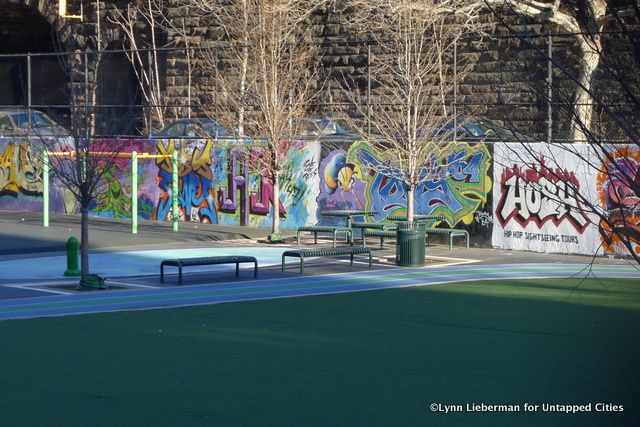
Initially Colonial Park, Jackie Robinson Park is an approximately 13-acre public park that is bounded by Bradhurst Avenue, 155th Street, Edgecombe Avenue, and 145th Street. The park was initially designed as a playground to entice city children to participate in organized play, but it eventually expanded to become one of Harlem’s most “community-connected” parks.
Sitting just south of the historic baseball stadium, the Polo Grounds, Jackie Robinson Park was one of ten original parks in the city to receive a city pool, which opened in 1936, along with its recreation center. In 1978, the park was renamed Jackie Robinson Park.
Harlem Meer lies within the northeast corner of Central Park, west of Fifth Avenue and south of 110th Street. The word “meer” is Dutch for lake and was designed to memorialize Harlem when it was a separate village settled by European settlers in the 17th century. The original settlement of Harlem initially included portions of what is now Central Park.
The meer is home to thriving wildlife, which often brings families to the area for catch-and-release fishing. Families also are drawn to the location for swimming in the summer or skating in the winter at Lasker Rink and Pool, which opened in 1966, reducing Harlem Meer’s size to 11 acres in the process.
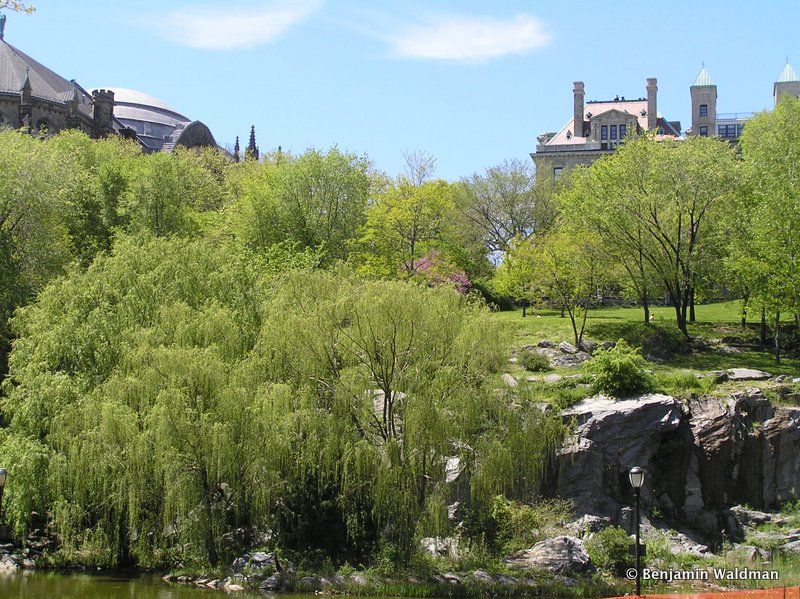
Morningside Park is a narrow strip of a park that stretches along thirteen blocks through Harlem and Morningside Heights. The park includes some of New York City’s most breathtaking views and dramatic landscapes, including rocky Manhattan schist, some of which date back to over 30 million years ago. The area was previously settled by the Harlem Plain Indians, who called the area Muscoota, and was later settled by the Dutch.
Barbecue areas are located throughout the park, as well as many popular baseball fields in which local teams play on. Across from the baseball fields, tree lined paths lead to a breathtaking view of a waterfall, which was once the location of a gym that had caused large protests at Columbia University due to the segregated design of the gym’s multiple entrances.
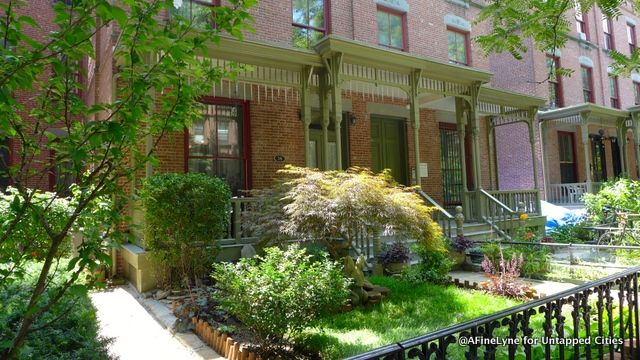
130th Street between Lenox Avenue and Fifth Avenue in Harlem is most commonly referred to as Astor Row. The land was purchased by John Jacob Astor in 1844 and its historic semi-attached row houses were eventually constructed by Astor’s grandson, William, starting in 1880.
After completion in 1883 (and just a year after Astor’s own death in 1882), the houses were divided out to the grandchildren, and remained in the family for several years until 1911, in which they began to be rented out.
Over time, the houses slowly deteriorated. In response, many restoration groups and banks began taking the necessary steps to restore Astor Row. Today, most of the street’s buildings have been completely restored thanks to many generous patrons.
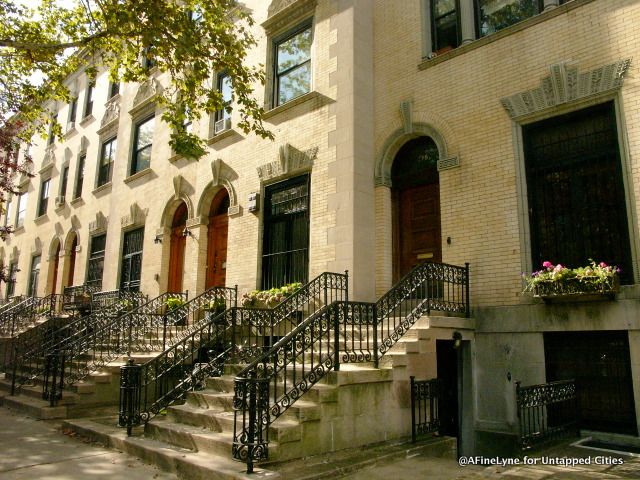
Strivers’ Row, or also known as the St. Nicholas Historic District, is a district along both sides of West 138th Street and West 139th Street between Adam Clayton Powell Jr. Boulevard and Frederick Douglass Boulevard. The row houses and buildings were built by developer David H. King Jr. between the years 1891 and 1893.
The historical district is divided into three different sets of buildings: The red brick and brownstone buildings on the south side of West 138th Street, the yellow brick and white limestone buildings with terra cotta trim on the north side of West 138th Street and the south side of West 139th Street, and finally the dark brick and brownstone buildings on the north side of West 139th Street.
Strivers’ Row has been home to notable residents such as Bill “Bojangles” Robinson and heavyweight boxer, Harry Wills. The U.S. Historic District is also listed as a New York City Landmark and on the U.S. National Register of Historical Places.
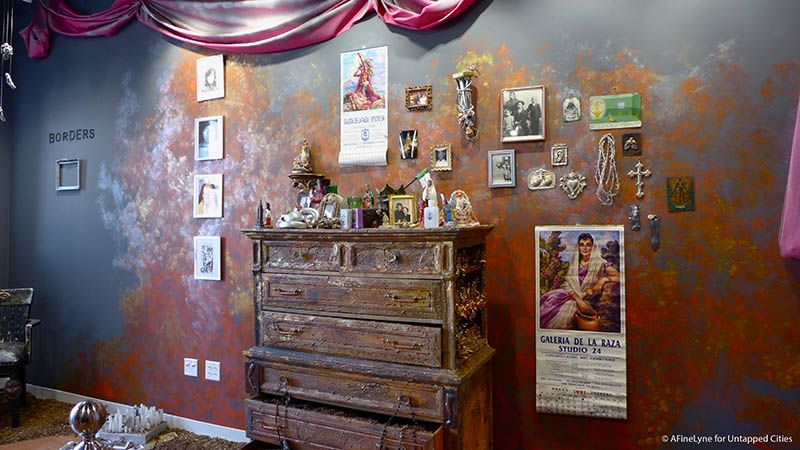
Once an abandoned firehouse at 120 East 125th Street in East Harlem, the Caribbean Cultural Center African Diaspora Institute was founded as a way to create an educational environment filled with exhibits to showcase and celebrate Yoruba culture and religion.
The firehouse was initially build in 1889, but was eventually restored into the museum beginning in 2014, thanks to City Council Speaker Melissa Mark-Viverito.
The CCCADI is made up of three parts, including a virtual exhibition entitled Augmented Reality, which highlights the surrounding neighborhood using a mobile app.
The Studio Museum at 144 West 125th Street between Adam Clayton Powell Jr. Boulevard and Lenox Avenue, is a contemporary art museum devoted to African-American artists of the 19th and 20th centuries.
The museum first opened in 1968 in a rented loft, but eventually moved to its current location in 1977. William T. Williams was tasked to write the proposal for the museum’s hopeful Artist-in-Residence program, and when it was approved, Williams and sculptor, Mel Edwards, prepared the museum’s former loft location into art studios.
The Artist-in-Residence program has been providing three local, national, and international artists with 11-month studio residencies, along with stipends to allow them to perfect their work in an artistic environment. In more recent years, The Studio Museum in Harlem announced a new $122 million design for the museum.

Harlem’s Heaven is the neighborhood’s oldest hat shop as well as the oldest, Black-owned, independently run clothing store. The store is owned by Evetta Petty and was first opened in 1989.
The hat shop is famous around the globe for its elegant hats, and Petty’s handmade creations have been featured in exhibits at the Museum of Art and Design, in magazines like Vogue and Bazaar, and on television shows like Unbreakable Kimmy Schmidt.
The Malcolm Shabazz Harlem outdoor marketplace, also known as Harlem’s Little Africa, sits on 116th Street, east of Lenox Avenue. The market is composed of individual vendors from around Africa and is a great place to find traditional African trinkets, clothing, wood carvings, and of course, plenty of beads.
The market was named after the grandson of Malcolm X, Malcolm Shabazz, and is open daily from 10 A.M. to 8 P.M.
The Malcolm Shabazz Harlem outdoor marketplace is great location to experience African culture and a great way to sample some authentic African cuisine as well.
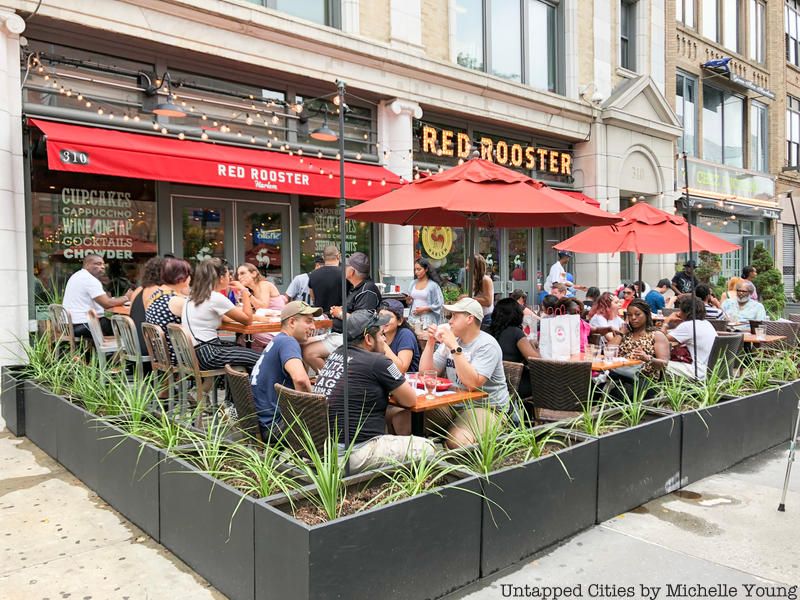
The Red Rooster, located at 310 Lenox Avenue in Harlem, is an american comfort restaurant named after the famous Harlem speakeasy that brought in some of the 20th century’s most notable figures, including Nat King Cole and Adam Clayton Powell Jr.
Founded by Andrew Chapman and Marcus Samuelsson, the restaurant opened in 2010 to celebrate American cuisine and the culinary traditions of Harlem itself, which is incredibly diverse in its own right. Red Rooster is truly an homage to its surrounding neighborhood, hiring from within the community, buying from local purveyors, and even providing the community with cooking classes.
Downstairs of Red Rooster, Ginny’s Supper Club provides a classic Harlem speakeasy experience to enjoy the restaurant’s dishes and live music.
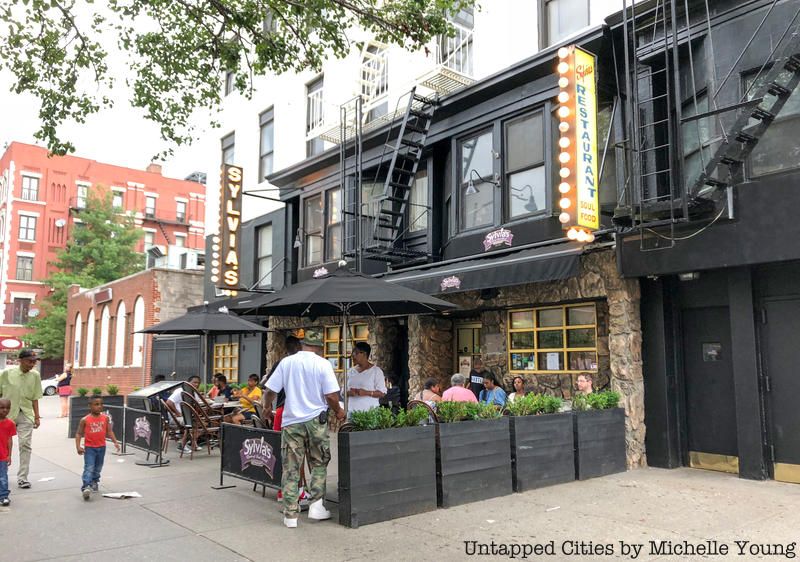
Located at 328 Malcolm X Boulevard in Harlem, Sylvia’s Restaurant of Harlem is a neighborhood landmark and is dubbed “The Queen of Soul Food.”
The restaurant was founded in 1962 by Sylvia Wood and continues to serve up some of the most authentic soul food in the nation. Sylvia’s hosts special “events” throughout the week that only drive home the feeling of southern comfort, as Sundays are for Gospel brunch and Wednesdays are for live music.
It’s been over fifty years since Sylvia Wood first founded the restaurant, but it is still owned and operated within the Wood family.
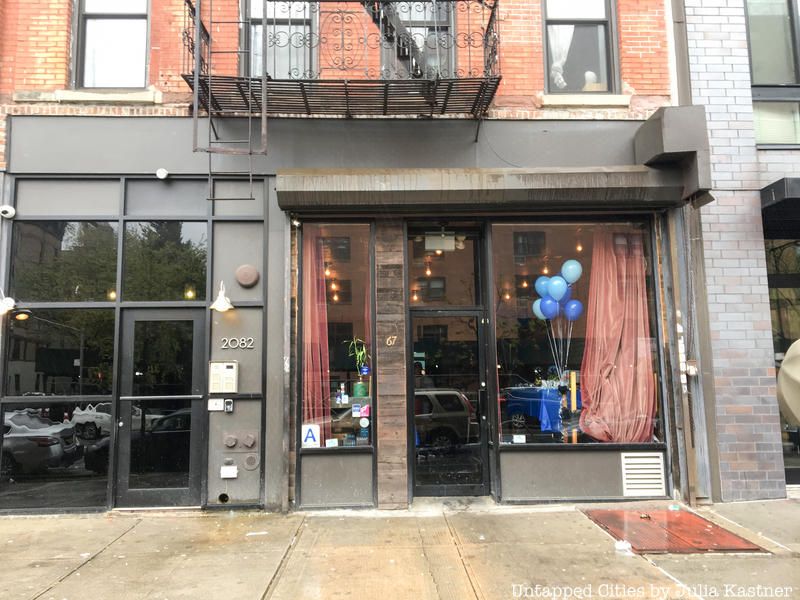
67 Orange Street sits at 2082 Frederick Douglass Boulevard and is a lounge bar with an authentic vintage-speakeasy vibe.
The bar was founded by Karl Franz Williams and was heavily inspired by Almacks, one of the first black-owned and operated bars in New York City. The name, 67 Orange Street, is even a tribute to Almacks, being the address of the last place it stood.
67 Orange Street was founded for the purpose of preserving the historic feel of Almacks, where couples once danced to emerging jazz and others gathered to enjoy moonshine whiskey.
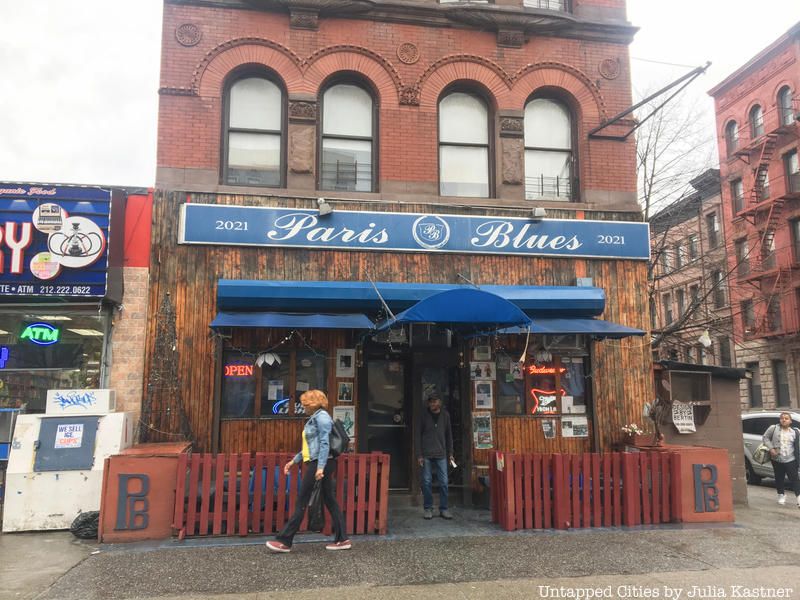
Sticking with Harlem’s prominent history with jazz music and clubs, Paris Blues Jazz Club at 2021 Adam Clayton Powell, Jr. Boulevard, is a must visit bar for anyone in or near the neighborhood.
Opened in 1969 by Samuel Hargress Jr., Paris Blues is Harlem’s oldest live jazz dive. The now 81-year old Hargress, has managed the club every year for its nearly 50 year lifespan and doesn’t show any sign of stopping soon. The club provides live jazz seven nights a week with no cover charge!
Paris Blues Jazz Club truly is one of a kind, even gaining some publicity in 2010 when Benjamin Norman wrote for The New York Times that Hargress Jr. had “the strangest business cards” for the club, not only including his own name, but the name of every single member of his staff.
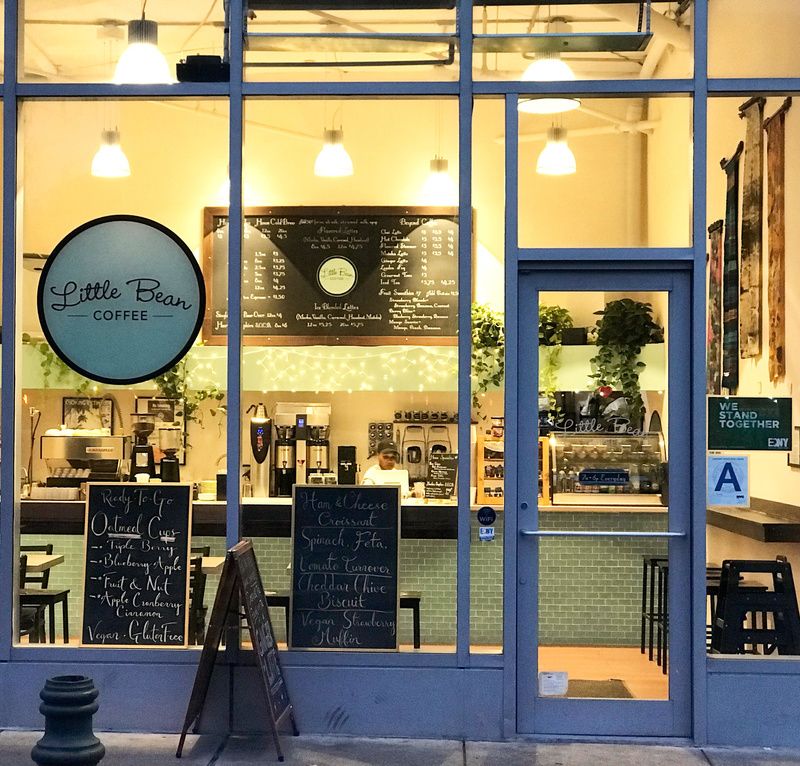
Image Courtesy of Little Bean Coffee
Little Bean Coffee is located at 111 Central Park N. This small coffee shop is owned and operated by husband-and-wife business partners, Chris and Claire Saphire, who actually met at a coffee shop in Los Angeles.
The Saphire’s focus on sustainably sourced coffee and their beans are roasted locally, just across the river in Union City, NJ. The shop itself has a cozy vibe with its robin egg blue accents throughout the cafe.
Little Bean Coffee’s signature drink is the “Harlem Saphire” by Chris, which is “a triple strength, single origin cold brew, shaken and served in a frosted martini glass with a cinnamon stick garnish.” Being lovers of art as well, the cafe periodically displays local artists’ paintings on its walls.
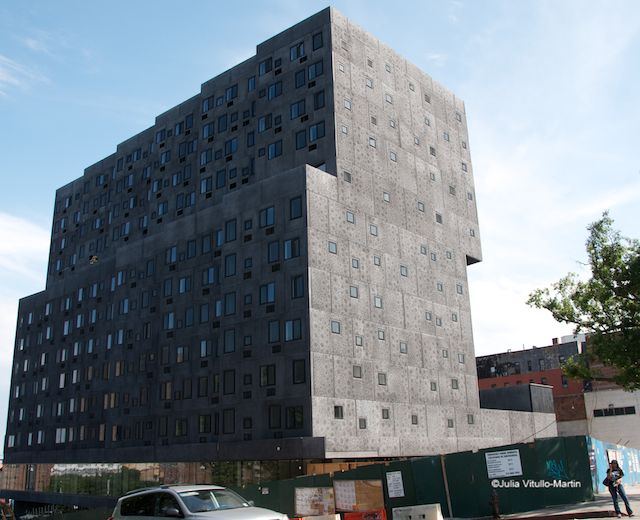
The Sugar Hill Children’s Museum of Art & Storytelling is located at 898 St. Nicholas Avenue at 155th Street and was developed by Broadway Housing Communities as “a stimulating space for neighborhood families to gather and share in cultural programs.” The museum opened in 2015 as the cultural heart of the Sugar Hill Project.
The 191,000-square-feet, mixed-used building was designed by British architect David Adjaye, and is home to 140 affordable apartments, as well as the museum.
Next, Explore 22 Delicious Bakeries in Harlem, NYC and check out 21 Must Visit Spots in Chelsea, NYC: An Untapped Cities Guide. Get in touch with the author on Instagram @mjohnathonrich.
Subscribe to our newsletter